- Home
- Kristin Harmel
The Room on Rue Amélie Page 31
The Room on Rue Amélie Read online
Page 31
I’m also indebted to the kind folks at the Holocaust Memorial Resource and Education Center of Florida and the Mémorial de la Shoah in Paris, as well as to Sarah Helm for her illuminative book about Ravensbrück.
Ultimately, Ruby’s story takes a much different course than Virginia’s real life did. But I’d like to think that there’s a little piece of the heroic Virginia in this book. In fact, I’d like to think there’s a little piece of Virginia in all of us—and that when we see injustice, we might just have the courage to stand up and fight against it.
Kristin Harmel
Acknowledgments
I can’t say enough about all the wonderful people who have helped me with this book—and with my career in general. To Holly Root: You are the best agent on the planet, and I’m so fortunate to be your client—and your friend. Thanks for all your hard work and wonderful advice, and for always being in my corner. I’m so excited to see what the future holds for Root Literary. To Abby Zidle: Lady, how do you do it? You are juggling about five million responsibilities, and you somehow execute all of them perfectly. Thanks for being a wonderful editor and a great advocate for me and my novels. To Kristin Dwyer: Striking out on your own is such an act of bravery, and I’m so glad to see you finding your happiness. Woo-hoo for LEO PR!
Heather Baror-Shapiro, you are a goddess of foreign rights, and I’m so glad to be working with you. Dana Spector, you are a rock star for so many reasons. Andy Cohen, I’m so happy to see you having such “Gifted” success. And Farley Chase, I will never forget the way you changed my life by first bringing my novels to a large, worldwide audience.
To Eva Schubert: I miss working with you, but I’m so glad that our friendship continues to flourish. We need a red velvet cupcake date soon, my dear! (Thanks for correcting my German in this book too!) And to Elisabetta Migliavada: Thank you for both your friendship and your continued support of me and my books. Hope to see you again soon—and to meet Giulia! Thank you also to Julia Fronhoefer, Nicola Bartels, Jorid Mathiassen, Hilit Hamour-Meir, and all my wonderful editors and publishers all over the world. I’m beyond grateful that you’ve shared my novels with so many wonderful readers.
Big thanks to all the other wonderful people I’ve had the opportunity to work with at Gallery Books, Root Literary, and Waxman Leavell Literary, especially Meagan Harris, Nancy Tonik, Diana Velasquez, Mackenzie Hickey, Chelsea McGuckin, Jen Long and the whole Gallery sales team, Taylor Haggerty, and Ashley Lopez. An extra-special thank-you to Jen Bergstrom, Louise Burke, and Carolyn Reidy.
Huge love and gratitude to my Swan Valley sisters (and brother), some of the kindest, most talented people I have the pleasure to know: Wendy Toliver, Linda Gerber, Allison van Diepen, Emily Wing Smith, Alyson Noël, Jay Asher, and Aprilynne Pike. Everyone should read everything these talented souls write! I’m a better writer and a better person for knowing them.
To those of you in the book blogging/reviewing community who are so vocal and supportive about the books and authors you enjoy: THANK YOU. You help share our books with readers, which is such a gift. Thanks especially to Jenny O’Regan, Melissa Amster, Amy Bromberg, Aestas, Brenda Janowitz, Liz Fenton and Lisa Steinke, Kristy Barrett, Hailey Fish, and Lorelei—and I know I’m just scratching the surface. And thank you to all the readers who take the time to give me feedback on my novels—whether by email, social media, or review sites. It means a lot to hear from you.
Thanks, as always, to all my wonderful family members and friends, who are too numerous to name—but you know who you are (I hope!). I love you all.
A special thanks to Lauren Boulanger for being so wonderful with Noah.
And of course a very deep and special thank-you to Jason and Noah. You two are the center of my world, and every day you teach me more about the depths of my heart. As long as there are stars in the sky, I will love you.
Want more historical women's fiction set against the backdrop of World War II? Don't miss The Light Over London from critically-acclaimed author Julia Kelly!
Told from the present-day perspective of a British antiques dealer who specializes in helping families sell off the contents of estates, Julia Kelly transports us to World War II London through forgotten antique treasures, remembered triumphs, and fierce family ties.
The Light Over London
* * *
ORDER YOUR COPY TODAY!
A Gallery Books Reading Group Guide
The Room on Rue Amélie
Kristin Harmel
This reading group guide for The Room on Rue Amélie includes an introduction, discussion questions, and ideas for enhancing your book club. The suggested questions are intended to help your reading group find new and interesting angles and topics for your discussion. We hope that these ideas will enrich your conversation and increase your enjoyment of the book.
Introduction
When Ruby Henderson accepts a proposal of marriage from the dashing Frenchman, Marcel Benoit, she envisions an idyllic life in Paris. But it’s 1939, and World War II is imminent. Marcel proves distant as a husband, and Ruby experiences acute loneliness early on in her marriage.
After Marcel’s death, Ruby is determined to continue his efforts in the French Resistance, and she begins sheltering Allied pilots, using her apartment as a safe house. Among the many men Ruby hides is the injured RAF pilot Thomas Clarke, whom she nurses back to health. As Ruby’s emotional attachment to Thomas grows, she worries about his return to battle. When her Jewish neighbors, the Dachers, are deported, Ruby vows to protect their daughter, Charlotte. Ruby and Charlotte become a family, risking everything for the Allied cause.
Topics & Questions for Discussion
1. Describe Ruby Henderson’s first encounter with Marcel Benoit. Who or what is responsible for the distance that grows between them during their short marriage?
2. “Why do we have to be Jewish anyhow?” (page 14) How does eleven-year-old Charlotte Dacher experience religious discrimination in the days leading up to the Nazi occupation of France? To what extent do her feelings of alienation facilitate her special bond with the American expatriate Ruby Benoit? What shared qualities make Charlotte and Ruby compatible?
3. Compare and contrast Marcel Benoit’s and Charlotte Dacher’s reactions to the news that Ruby is pregnant. What do their reactions reveal about their characters and their feelings about Ruby?
4. “I don’t understand. You’re working for the Allies? Why didn’t you tell me?” (page 60) Discuss Marcel’s secrecy about his underground Resistance efforts. How reasonable is his decision to keep his work concealed from his wife? Does Ruby’s sense of personal betrayal in light of Marcel’s secret seem justified? Why, or why not?
5. How does Ruby’s baby’s stillbirth impact her relationship with the Dacher family and her sense of personal responsibility for Charlotte? How does the child’s death affect Ruby’s relationship with her husband, Marcel?
6. “I must help. I must take over Marcel’s work on the [escape] line.” (page 103) Why does Ruby volunteer to continue her late husband’s work in the immediate aftermath of his death? What does her determination suggest about her love for her adopted country?
7. How does the arrival of the injured RAF pilot Thomas Clarke help Ruby to regain her self-confidence and sense of purpose? What does his willingness to risk discovery in order to help Charlotte’s mother reveal about his nature?
8. “This is France, Madame Benoit. We are French citizens.” (page 204) Discuss the roundups taking place in Paris during the German occupation. Why does Monsieur Dacher persist in believing his French citizenship will protect him and his family from being arrested? To what extent does Ruby’s eventual arrest and imprisonment as an American citizen seem surprising?
9. How does Lucien, the young forger, become an important part of Ruby’s extended Resistance family? What explains the intensity of Lucien’s connection with Charlotte?
10. How does Thomas’s return to Paris two years after Ruby helped him to escape the f
irst time confirm the depth of their feelings for each other? Given her unique predicament—serving as a surrogate parent to Charlotte, sheltering wayward Allied pilots, and eking out survival during wartime without any steady income—why does Ruby surrender to Thomas’s affections? How does her eventual pregnancy transform her?
11. “This war, it has changed everything about the world. But our most important lives are still on the inside, aren’t they? What matters is what’s in your heart.” (page 312) Discuss Charlotte’s distinction between inside lives and outside lives. Why might difficult historical and cultural periods such as wartime serve as catalysts for more dramatic interior lives?
12. How would you describe Ravensbrück, the German work camp where Ruby is imprisoned? Why does her pregnancy make Ruby especially vulnerable in the camp? What does the altruism of fellow detainees and German civilians reveal about the potential for goodness in the midst of tremendous evil?
13. To what extent were the deaths of Ruby and Thomas a narrative surprise to you? Why do you think the author chose to end their lives at the same point in the dramatic arc of the novel? How would you describe your reaction to the author’s description of their afterlife reunion in the poppy fields of California?
14. Discuss the depictions of Paris in wartime in the novel. How do the author’s details of the behavior of German soldiers toward the French, of the detention camps, and of the efforts of the Resistance enable you to visualize the novel’s milieu? Which details did you find most compelling? Why?
15. Why do you think the author chose to frame her novel with beginning and ending chapters involving Charlotte and Lucien? Based on ambiguities in the book’s opening chapter, what assumptions did you make about Ruby and Thomas as you read the novel? How did you feel when you discovered the final chapter was about Charlotte and Lucien?
Enhance Your Book Club
1. For Ruby, the fields of poppies that bloom on her parents’ property in Antelope Valley, north of Los Angeles, represent her home, the place she longs to return to in order to raise a family one day, the destination she describes to her beloved, Thomas, to fill his thoughts during their separation. Ask members of your group to reflect on their favorite places. What accounts for the significance of these physical locations, and when do they access them now? Whom have they shared time with at these destinations?
2. Throughout The Room on Rue Amélie, Ruby and Charlotte grapple with the question of God’s existence in the midst of suffering and wartime. For each of them, God’s presence is something felt and experienced through the kindness of others and through acts of self-sacrifice. Ask members of your group to consider personal crises they have faced. What sources of strength have they encountered during those periods in their lives? To what extent could they relate to the crippling doubt, anxiety, and questioning of faith that arose for Charlotte and Ruby in occupied Paris during World War II?
3. At the end of her life, Ruby writes three letters—one to her parents, one to Thomas in care of the Royal Air Force, and one to Charlotte. Ask members of your group to consider the people in their lives they would feel compelled to communicate with in their final moments. What might Ruby have included in each of her letters? How would members of your group feel about being the recipients of end-of-life letters? How has the age of social media changed the traditional methods of communicating with those we love most?
4. World War II was won primarily by the Allied armed forces, but personal stories of bravery similar to Ruby’s also represent many small triumphs that helped turn the tide—and helped save innocent lives. Ask members of your group to discuss what might have happened had individuals such as Ruby not stood up for goodness in the face of evil. Might the outcome of the war have been different? How important is it to stand up for what you believe in, even if it means putting yourself in peril? Discuss times in your own lives when you’ve taken risks to stand up for what’s right, and whether there are instances in your own lives now in which standing up for what you believe in might make a difference.
About the Author
KRISTIN HARMEL is the international bestselling author of The Sweetness of Forgetting, The Life Intended, and When We Meet Again. She lives in Orlando, Florida.
FOR MORE ON THIS AUTHOR:
Authors.SimonandSchuster.com/Kristin-Harmel
MEET THE AUTHORS, WATCH VIDEOS AND MORE AT
SimonandSchuster.com
Facebook.com/GalleryBooks
@GalleryBooks
We hope you enjoyed reading this Simon & Schuster ebook.
* * *
Get a FREE ebook when you join our mailing list. Plus, get updates on new releases, deals, recommended reads, and more from Simon & Schuster. Click below to sign up and see terms and conditions.
CLICK HERE TO SIGN UP
Already a subscriber? Provide your email again so we can register this ebook and send you more of what you like to read. You will continue to receive exclusive offers in your inbox.
Gallery Books
An Imprint of Simon & Schuster, Inc.
1230 Avenue of the Americas
New York, NY 10020
www.SimonandSchuster.com
This book is a work of fiction. Any references to historical events, real people, or real places are used fictitiously. Other names, characters, places, and events are products of the author’s imagination, and any resemblance to actual events or places or persons, living or dead, is entirely coincidental.
Copyright © 2018 by Kristin Harmel Lietz
All rights reserved, including the right to reproduce this book or portions thereof in any form whatsoever. For information, address Gallery Books Subsidiary Rights Department, 1230 Avenue of the Americas, New York, NY 10020.
First Gallery Books hardcover edition March 2018
GALLERY BOOKS and colophon are registered trademarks of Simon & Schuster, Inc.
For information about special discounts for bulk purchases, please contact Simon & Schuster Special Sales at 1-866-506-1949 or [email protected].
The Simon & Schuster Speakers Bureau can bring authors to your live event. For more information or to book an event, contact the Simon & Schuster Speakers Bureau at 1-866-248-3049 or visit our website at www.simonspeakers.com.
Interior design by Bryden Spevak
Jacket design by Chelsea McGuckin
Jacket image by Lee Avison/Trevillion, Sally Mundy/Arcangel
Author photograph by Wenona Christensen
Library of Congress Cataloging-in-Publication Data
Names: Harmel, Kristin, author.
Title: The room on Rue Amelie / Kristin Harmel.
Description: First Gallery Books hardcover edition. | New York : Gallery Books, 2018.
Identifiers: LCCN 2017047966| ISBN 9781501171406 (hardcover) | ISBN 9781501190544 (softcover) | ISBN 9781501171413 (ebook)
Subjects: LCSH: World War, 1939-1945--France--Fiction. | BISAC: FICTION /
Historical. | FICTION / Family Life. | FICTION / War & Military. | GSAFD:
Historical fiction. | War stories.
Classification: LCC PS3608.A745 R66 2018 | DDC 813/.6--dc23
LC record available at https://lccn.loc.gov/2017047966
ISBN 978-1-5011-7140-6
ISBN 978-1-5011-7141-3 (ebook)

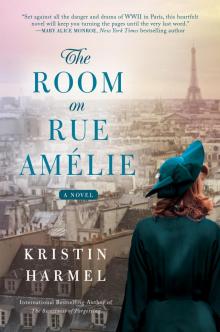 The Room on Rue Amélie
The Room on Rue Amélie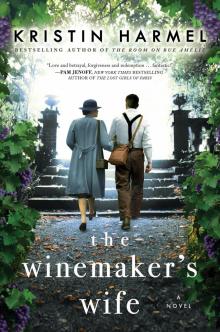 The Winemaker's Wife
The Winemaker's Wife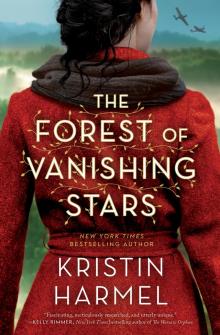 The Forest of Vanishing Stars
The Forest of Vanishing Stars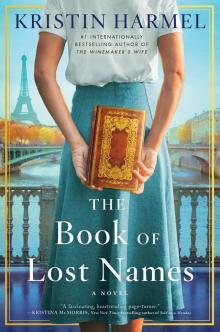 The Book of Lost Names
The Book of Lost Names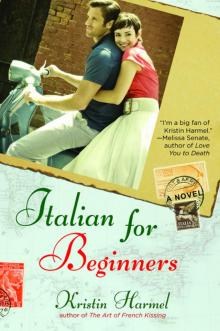 Italian for Beginners
Italian for Beginners After
After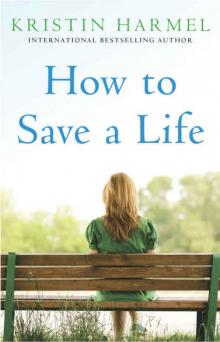 How to Save a Life
How to Save a Life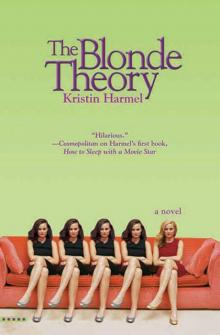 The Blonde Theory
The Blonde Theory The Sweetness of Forgetting
The Sweetness of Forgetting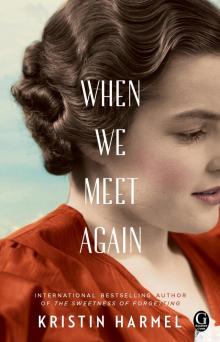 When We Meet Again
When We Meet Again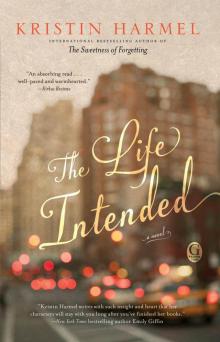 Life Intended (9781476754178)
Life Intended (9781476754178)